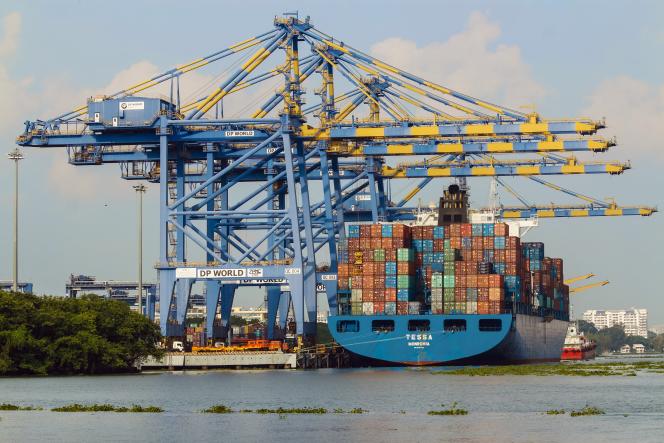The boat avoided sinking, but not all of the breaches were sealed. On Friday July 7, the 175 countries gathered in London for crucial negotiations of the International Maritime Organization (IMO) agreed to a significant strengthening of the decarbonization objectives of the maritime sector, with the overall aim of carbon neutrality by the middle of the century. But these new targets, reduced after a showdown between states, are still insufficient to avoid the worst effects of the climate crisis.
The maritime sector is an essential cog in the wheel of globalisation: it provides more than 80% of world trade, thanks to the constant ballet of 100,000 ships, which transport 2.2 billion tonnes of goods per year. Containers, bulk carriers and oil tankers, for the most part propelled by heavy fuel oil, which is inexpensive but extremely polluting. Result: this sector is responsible for one billion tonnes of CO2 equivalent per year, i.e. 3% of global emissions. This is the equivalent of releases from Japan or the whole of Africa.
Yet this sector, along with aviation, whose emissions are comparable, is still a blind spot in the fight against the climate crisis. Not concerned by the Paris climate agreement of 2015, it has “largely avoided doing its part” in reducing greenhouse gas emissions, according to a report published on Monday by the Seas at Risk association, which brings together some thirty European non-governmental organizations (NGOs). If nothing is done, maritime transport could weigh 17% of global emissions in 2050, while freight demand continues to grow.
In 2018, the countries of the IMO, a body of the United Nations (UN), had committed to reducing their emissions by 50% by 2050 compared to 2008 and to succeed in stopping them. ” as soon as possible “ over the century. But this commitment is far from being aligned with a limitation of global warming to 1.5°C, the most ambitious objective of the Paris agreement. The States had then promised to revise their strategy upwards in July 2023, with a stated ambition: to reduce maritime transport emissions to zero by the middle of the century.
“Accord of vows and prayers”
Far from there “historic decision” expected by observers, the text is weakened by the introduction of numerous reservations. In convoluted language, countries finally pledged, globally, to achieve net-zero emissions “by or around, i.e. near 2050”taking into account “different national circumstances”. The mention of net emissions is ambiguous and raises the question of the use of carbon offsetting for residual emissions, techniques criticized because they are considered ineffective or even counterproductive in the fight against global warming.
You have 61.6% of this article left to read. The following is for subscribers only.
